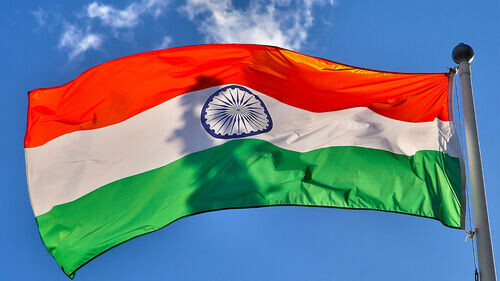
New Delhi, India – India's Gross Domestic Product (GDP) is projected to surpass that of Japan by the end of this year, positioning India as the world's fourth-largest economy, trailing only the United States, China, and Germany. This optimistic forecast comes from a prominent Indian economist affiliated with a government think tank.
Arvind Virmani, an economist with NITI Aayog (National Institution for Transforming India), expressed strong confidence in this trajectory during an interview with India's PTI news agency on May 26. "India is in the process of becoming the world's fourth-largest economy, and I am confident that it will be realized by the end of 2025," Virmani stated. Dr. Virmani is a distinguished economist, having previously served as the Indian government's Chief Economic Advisor and as an Executive Director at the International Monetary Fund (IMF).
His projections are based on the latest World Economic Outlook report released by the IMF last month. According to this report, India's economy is expected to grow by a robust 6.2% this year, pushing its nominal GDP to an estimated $4.187 trillion (approximately 5,727 trillion Korean Won) by the close of 2025. In stark contrast, Japan's economy is forecast to grow at a much slower 0.6%, with its nominal GDP reaching an estimated $4.186 trillion (approximately 5,726 trillion Korean Won) by year-end. This slender margin suggests that India will narrowly edge out Japan.
Should Dr. Virmani's predictions materialize, India will solidify its position as a major global economic power, climbing to fourth place in terms of GDP, after the United States, China, and Germany. This ascent marks a significant milestone for the South Asian nation.
A Decade of Rapid Growth and Future Prospects
India, now the world's most populous nation, has demonstrated remarkable economic dynamism over the past decade. Excluding the period of the COVID-19 pandemic, the country has maintained an average annual economic growth rate of over 7%. This consistent high growth has propelled India's rise in the global economic hierarchy. In 2014, India broke into the top 10 economies by GDP. A momentous achievement came in 2022 when India surpassed its former colonial ruler, the United Kingdom, to become the world's fifth-largest economy. Its impending overtake of Japan further underscores this rapid climb.
Several factors contribute to India's sustained growth momentum. A burgeoning young population, a rapidly expanding middle class, and increasing urbanization are driving robust domestic consumption. The government's emphasis on infrastructure development, digitalization, and "Make in India" initiatives aimed at boosting manufacturing and foreign investment has also played a crucial role. Furthermore, India's thriving services sector, particularly in information technology and business process outsourcing, continues to be a significant contributor to its GDP and export earnings. Recent reforms to improve the ease of doing business and attract foreign direct investment (FDI) have also created a more favorable environment for economic expansion.
Looking beyond 2025, analysts anticipate that India's growth trajectory will continue, with some projections indicating it could become the third-largest economy by 2030, surpassing even Germany. This long-term outlook is supported by demographic dividends, ongoing economic reforms, and increasing integration into global supply chains.
Challenges and Disparities Remain
Despite these impressive headline figures and projections of becoming a top global economy, it is crucial to acknowledge the significant challenges and disparities that persist within India. While the country's aggregate GDP is soaring, its per capita income (PCI) remains relatively low. For 2025, India's per capita income is projected to be only around $2,880. This figure places India firmly within the lower-middle-income category, according to World Bank criteria.
This vast difference between total GDP and per capita income highlights the challenge of ensuring that the benefits of economic growth are distributed more equitably across the large population. Issues such as income inequality, poverty, unemployment, and access to quality education and healthcare remain critical concerns. A significant portion of the workforce still operates in the informal sector, which lacks social security benefits and steady incomes. Moreover, bridging the rural-urban divide, improving agricultural productivity, and addressing environmental sustainability are ongoing development imperatives.
The Indian government is actively pursuing policies aimed at inclusive growth, such as social welfare programs, skill development initiatives, and efforts to formalize the economy. However, the sheer scale of the population means that these challenges require sustained and comprehensive efforts over many years. While the country celebrates its rapid ascent on the global economic stage, the focus must remain on improving the living standards and opportunities for all its citizens.
India's economic journey in 2025 will be closely watched, not just for its headline GDP growth, but also for its ability to navigate these complex socio-economic challenges and build a more equitable and prosperous future for its vast population.
[Copyright (c) Global Economic Times. All Rights Reserved.]




























